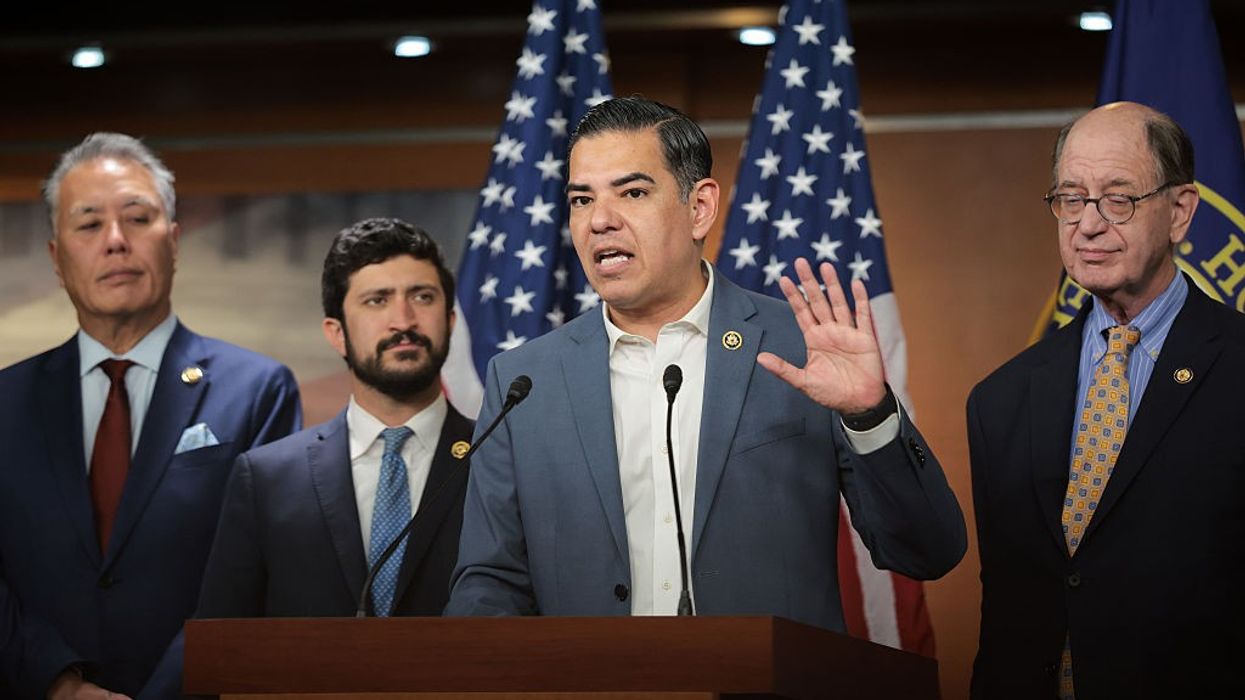I co-founded Justice Democrats. I was AOC's Communications Director. I've watched the fire die out from Bernie to AOC to Jamaal Bowman and Cori Bush. I've seen movements and moments that seemed poised to take back our democracy and our economy for the people slow to a crawl. Partly because our leaders were too trusting of the Democratic party. They thought we were all on the same team.
We aren't. We never were.
It's time for a full court press on the party. It's time to reshape it in the image of a better FDR. Take it over from the inside. Primary every corporate Democrat who thinks extraction is an economic policy. We need a new party—not a third party, but a Democratic party willing to clean house—starting with those who forgot how to build.
The party establishment can't just steal Mamdani's message. They've spent 30 years telling us why we can't build things, why we can't have universal healthcare, why we can't afford what every other developed country has. If Chuck Schumer suddenly started talking like Mamdani tomorrow, everyone would know he's full of shit.
So they'll do what they always do. They'll join Republicans in calling him too radical, too far left. They'll wring their hands about needing to appeal to the "center."
The center ain't what they think it is. It's swing voters who went from Obama to Trump and they want change, not compromise. They want someone to acknowledge that the system is broken and promise to fix it. They want a plan that makes sense.
Only 22% of Americans believe government can improve their lives. Twenty-two percent. That's what happens when both parties spend 40 years making sure that public options aren't functional. They make sure we can't build our own housing, transit, childcare, or healthcare system. They made sure the public can't build anything except tax breaks for billionaires.
Democrats tell us it's complicated. Republicans tell us it's immigrants' fault. Working families are taking on credit card debt to buy groceries. Teachers are driving Uber at night. Parents are choosing between daycare and rent.
We've accepted that this is just how it is. That America doesn't build things anymore. That the best we can hope for is tweaking a broken system around the edges.
Mamdani just showed Democrats how to call bullshit on all of that.
He won by acknowledging what everyone already knows—life has become unaffordable—and saying we're going to build our way out of it. Housing that teachers can afford. Transit that actually works. Childcare centers so parents don't have to choose between working and raising their kids. And that the ultra wealthy are going to pay their fair share.
He hasn't even been elected yet. But he's shown Democrats how to stop lying about the problem.
Stop explaining why we can't. Start acknowledging what's broken. Then provide the solution. Talk about it relentlessly with excitement and enthusiasm.
The establishment endorsed Cuomo—a sexual predator who spent his career making life worse for working people—because he represents their vision: pretend everything's fine, blame messaging when voters don't believe you.
Bill Clinton, Bloomberg, Clyburn, Torres—they all backed the predator over the builder. Because predators don't threaten their business model. Someone who acknowledges reality does.
Wall Street is terrified of Mamdani because public building kills private extraction. Every public housing unit is one less rent check for Blackstone. Every public childcare center is one less profit center for private equity. Every public transit line that works means fewer Uber rides, fewer car loans, fewer opportunities to bleed working people dry.
Wall Street doesn't build anymore. They buy what exists, jack up prices, and extract until there's nothing left. Our economy runs on extraction now. Healthcare alone will suck up $75 trillion over the next decade—not to make us healthier, but to transfer wealth upward. Housing, childcare, education—they're all cash vacuums.
Mamdani's promising to build public alternatives. That scares the shit out of them. He's proving you can win by admitting what everyone already knows. You can say "housing is unaffordable and we're going to build more of it" instead of lecturing people about market dynamics.
Now someone wins by saying we can build the things people need? Their business model collapses. Democrats have spent 30 years helping corporations privatize everything—from healthcare to housing to transit. They've turned basic needs into profit centers for Wall Street.
Young people assume they'll never own homes. Parents quit jobs because childcare costs more than they earn. Families crowd into apartments they can't afford while Democrats lecture us about GDP growth.
We've been trained to see poverty as inevitable. To see suffering as complicated. To see solutions as impossible.
Mamdani showed Democrats a different way. Admit that life has gotten harder. Acknowledge that work doesn't pay. Stop pretending the game isn't rigged. Then promise to build the things that make life livable.
Public building doesn't kill capitalism—it saves it from itself. When government builds housing, private developers have to compete. When we build public childcare, private centers can't charge whatever they want. But healthcare? Build public hospitals and clinics, and suddenly private insurers can't extract $75 trillion while people die rationing insulin. That's how you restart real competition. That's how you force corporations to actually create value instead of just extracting it.
Build the things people need to live. Not tax credits. Not market solutions. Not complicated programs that take three years to maybe help some people.
Mamdani won because he's the first Democrat in years to talk about the affordability crisis like someone who's actually tried to pay rent.
Americans aren't stupid. We know when we're being fed bullshit. We know when politicians are pretending our problems don't exist. We know when they're lying about why rent costs $3,000 a month or why insulin costs $600. We've just stopped expecting anyone to acknowledge reality, let alone fix it. We've accepted that politicians are liars and they will keep explaining why suffering is actually prosperity if you squint right.
The lottery tickets and crypto gambling show we've given up on the normal paths working. We need a party willing to admit those paths are broken before we'll believe they can be fixed.
What really terrifies them is if Mamdani succeeds in NYC, it spreads. Other cities start asking why they can't build public housing. Other states wonder why they can't have public childcare. The entire extraction economy—$75 trillion in healthcare alone, trillions more in housing, education, childcare—starts to crack. Every public option is a private profit center destroyed. Every successful public project is proof that we don't need them.
Mamdani hasn't even been elected yet. But he's shown us how to stop lying about what needs fixing. He's shown that you can win by promising to build for everyone, not just donors.
The movement's next job is to help Mamdani actually build—to prove the model works. Then we replicate it. Primaries in NYC, NYS, the US House and Senate. Every corporate Democrat who backs extraction over building needs a challenger who can build. Every AIPAC-purchased politician needs a challenger. Then maybe we can win in Texas and Tennessee and West Virginia. Then maybe people will believe the words we say.
If you still believe in this party, prove it. Help us take it back.
This isn't about purity. It's about survival. Either we build our way out of this mess or we keep managing the collapse until there's nothing left to manage.
Democrats need to learn from this. Or get sent home. We're building anyway.


